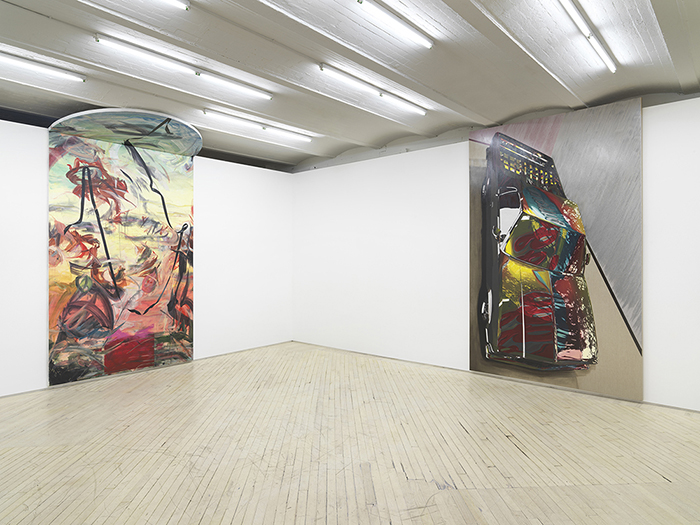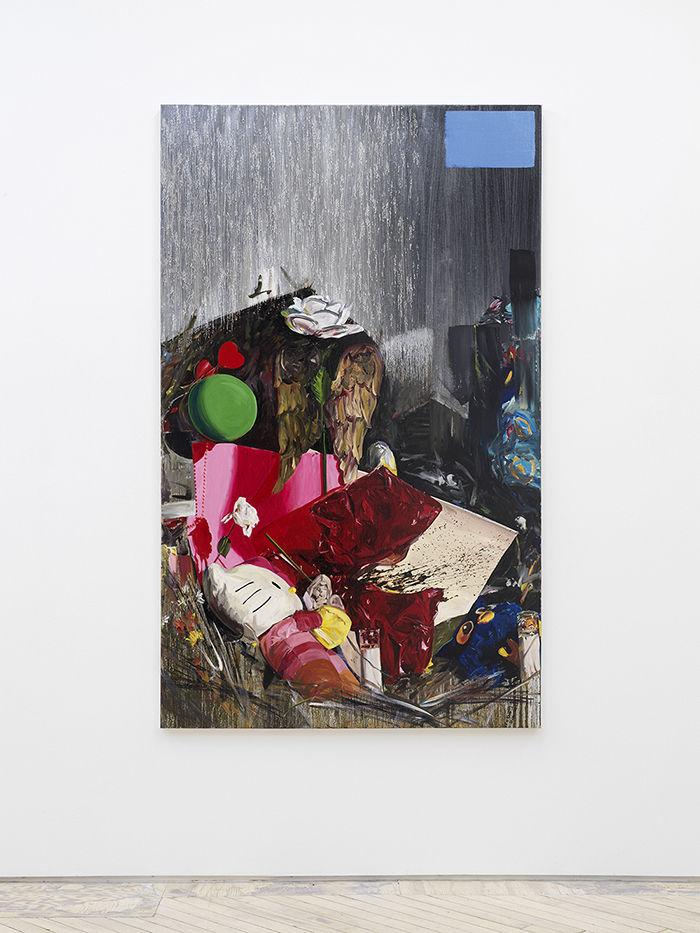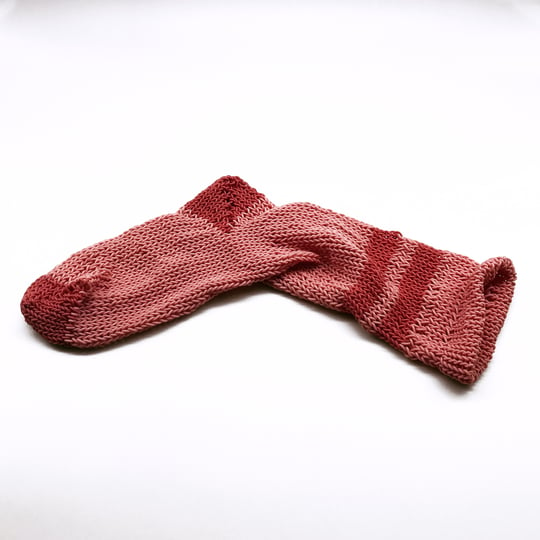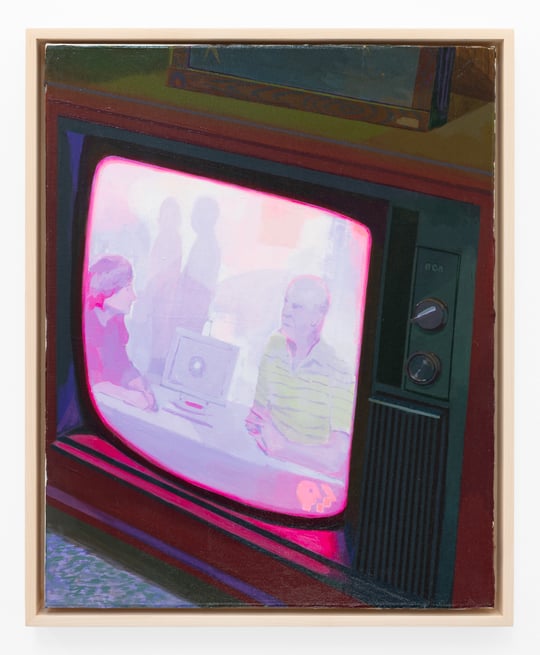
All images by Dario Lasagni and courtesy Bureau, New York.
I grew up in the mountains of East Tennessee among the children of hunters and outdoorsmen, where every day of my primary education at least one child in my classroom wore some form of camouflage attire. We sometimes played a juvenile game—the temptation still crosses my mind—of intentionally bumping into a person wearing camo and exclaiming, “Sorry, I didn’t see you there!” Perhaps it is a cheap laugh, but the mechanics of the joke feel incisive, picking apart at the contradictions that characterize camouflage: visibility and concealment, artifice and authenticity.
These paradoxes are contained in the name of one of the most popular brands of camouflage, REALTREE®, which has recently been borrowed by artist Tom Holmes as the title for their fourth solo exhibition at the gallery Bureau in New York. Obviously the clothing and other products manufactured by the camo company REALTREE® are, in the strictest sense, neither real nor trees, but the sense of realness they confer through the social performance of identity is potent, whether in the case of rigid masculinity in the rural South or second-hand trendiness in a Bushwick thrift store. In the press release accompanying the exhibition, Holmes—who has lived in rural Tennessee for the past decade—noted that “[camo] can be used as a kind of cloak of ‘realness’ for precarious radical bodies amidst the conservative norms of the South.”
The question of realness and how to convey it is, in many ways, at the heart of Holmes’s work, particularly in their paintings. At Bureau, REALTREE® is dominated by two large-scale oil paintings Holmes created to fit precisely within niches flanking a 17th-century stairwell at the Palazzo Galli Tassi in Florence, where the artist recently completed a residency. Because the dimensions of the gallery don’t correspond with those of the original niches, the rounded tops of the paintings are bent overhead the viewer, enfolding you within the washes of light and ribbons of color that cascade through each image. Although rather abstract, these monumental paintings share the same typological title Holmes applies to every painting in the show: untitled Arrangements.

In the smaller, more conventionally realist Arrangements, Holmes often shows the sort of roadside memorials that mark the sites of fatal automobile accidents and other deaths. Despite their grim suggestions of violence, these paintings are littered with traditionally femme symbols of love and tenderness: bouquets of flowers, teddy bears and other stuffed animals, smudgy hearts. But amid the evidence of mourning and memory, loneliness and abjection remain. Holmes has described these arrangements as “spontaneous sculptures… public, anonymous, and abused by the elements.”

In one untitled Arrangement, the particular roadside memorial depicted includes a stuffed Hello Kitty and—if my eyes don’t deceive me—a jewel-blue Furby. These colorful references bring Holmes back into the familiar territory of commercial culture, a visual language they have mined for years in their paintings of boxes of cereal and waffles. Instead of belonging to the irony-laced legacy of Pop art, Holmes’s works contend with the versatility and uncanniness of rendering space in a painting. In Holmes’s Hello Kitty painting, the recognizability of the feline Japanese character is sharply contrasted with the vagueness of its more abstractly rendered surroundings. The crisp focus that presents the doll in the bottom left corner with an almost trompe l’oeil realness fades into shadowy swathes of gray and black toward the painting’s upper reaches. It is as though you’re glimpsing the arrangement across the street and through the rain, your visual perception toggling between recognition and the unfulfilled desire for it. Opposite the askew Hello Kitty doll, a blue rectangle the hue of painter’s tape floats near the painting’s top right corner, appearing entirely divorced from the “real” scene shown below.
Many people understand duplicity as a form of malicious deception, a fraud, a fake-out. But the lesson provided by camouflage (and Holmes’s own REALTREE®) is that double-dealing, or pursuing two ends at once, can provide the protection and freedom necessary to survive and navigate the world. Sometimes you need to be cloaked or hidden to find the truth. Sometimes abstraction leads the way to reality. Sometimes you need to try on many different forms of camouflage before you can see yourself clearly.
Tom Holmes’s solo exhibition REALTREE® is on view at Bureau in New York through November 3.




